Hello Hive
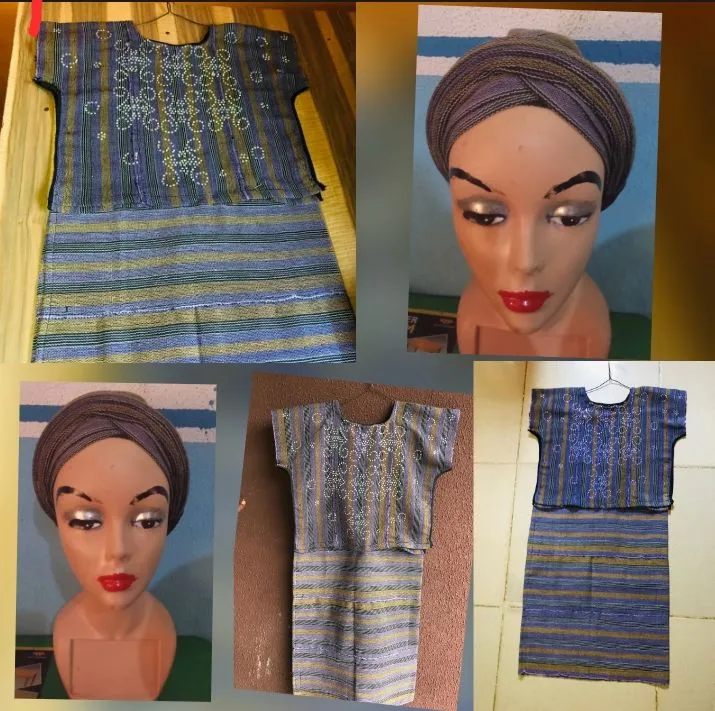
A beautiful morning to all my friends here and the creative souls of this community. It's good to see as many of you doing quite well and keeping the community active with your creative projects. I am learning so much from being on Hive and our collective DIY communities.
Recently I have learned how to cut and sew a beautiful traditional wear for our girl child, and today I want to share with you my very first project in that line.
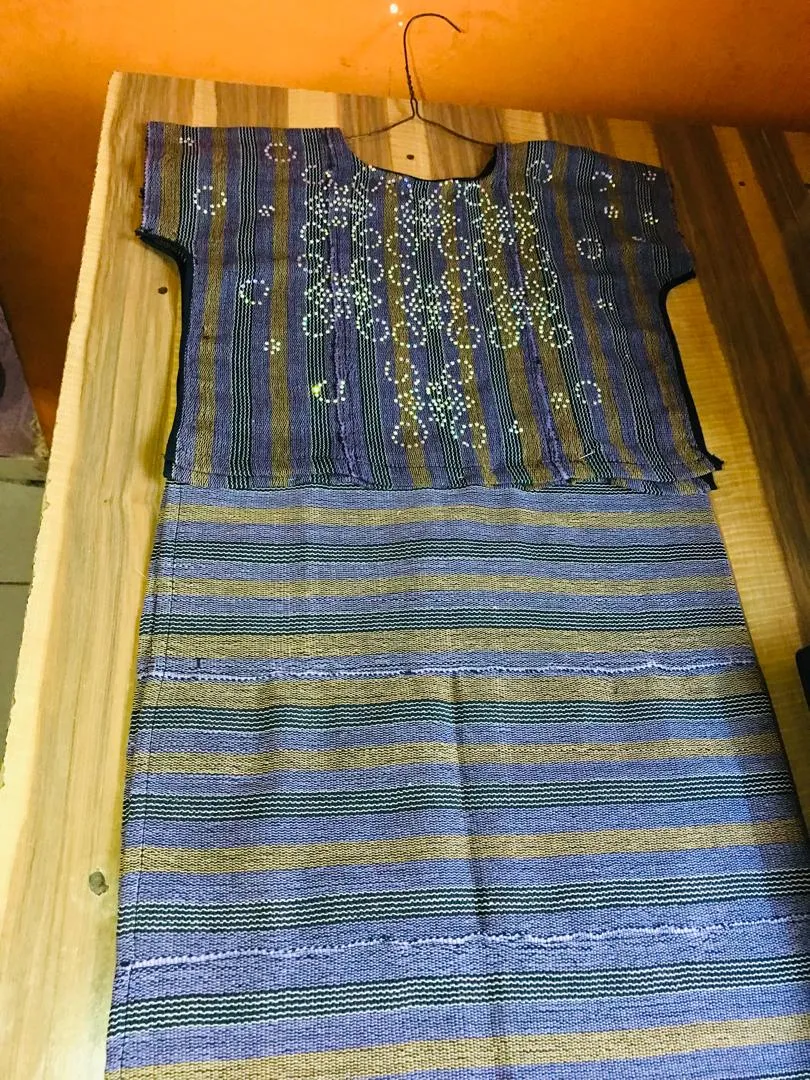
I will be sewing cultural wear for my neighbor's daughter. We love to uphold our culture and teach it to our children. With this wear, she can take some photographs, and while growing up, she will equally be learning about the dressing style, food, language, and others. Catching them young has been the key. If they grow up not being taught about any of these, our beautifully inherited cultural heritage will soon go into extinction. We have such numerous tribes and languages in our country, and this outfit is the traditional wear for our Yoruba cultural group.
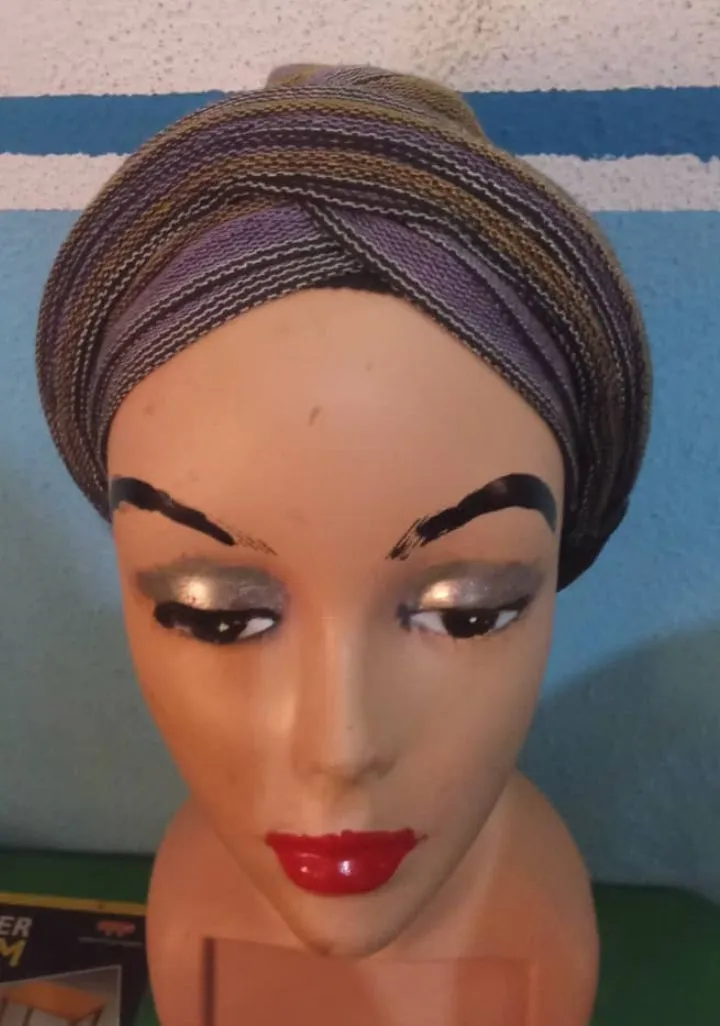
To make this outfit, we make use of the "Ofi," a fabric often weaved by our older parent. Weaving has for years been one of the ways we make clothes for ourselves. Our people have come all along wearing clothes cut and sewn from this weaved 'ofi.'
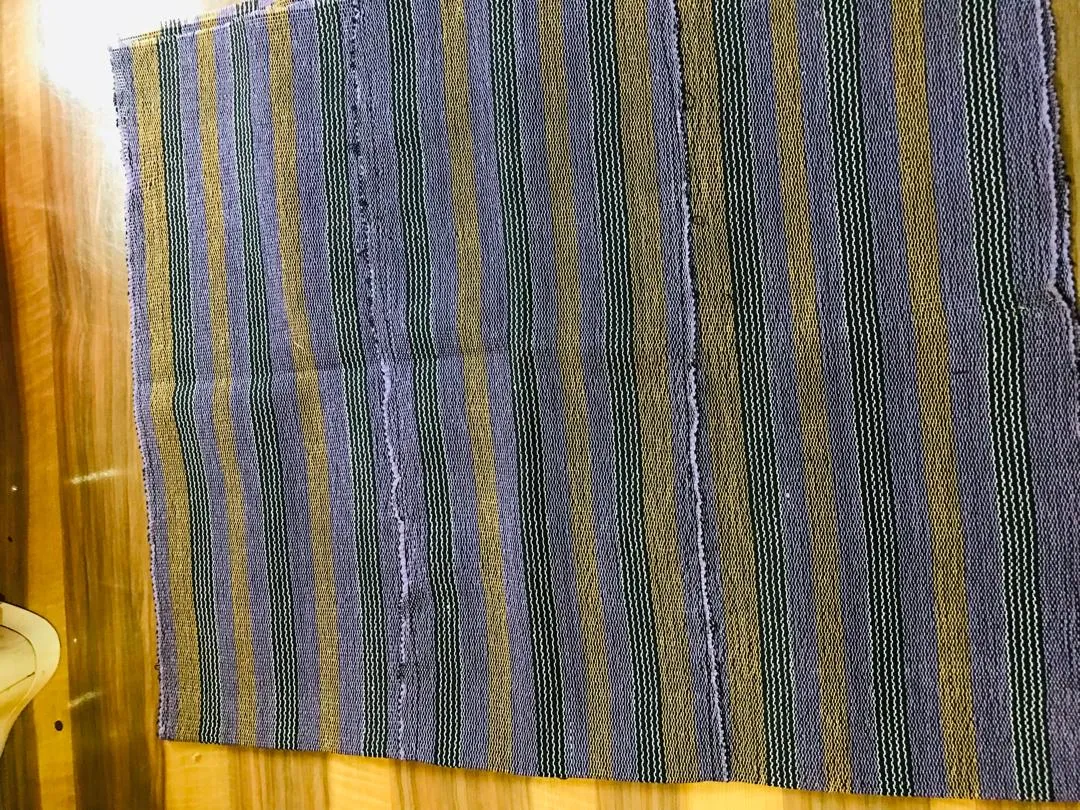
For today I am showing us how to cut and sew "Iro and Buba," a most cherished cultural design that is often sewn using the weaved "Ofi."
"Iro and buba" are two different words meaning blouse and wrapper.
The wrapper is to be tied on the waist, and the iron is worn as a blouse.
Cutting and sewing process
The blouse is often cut together with a part of the sleeve. For that
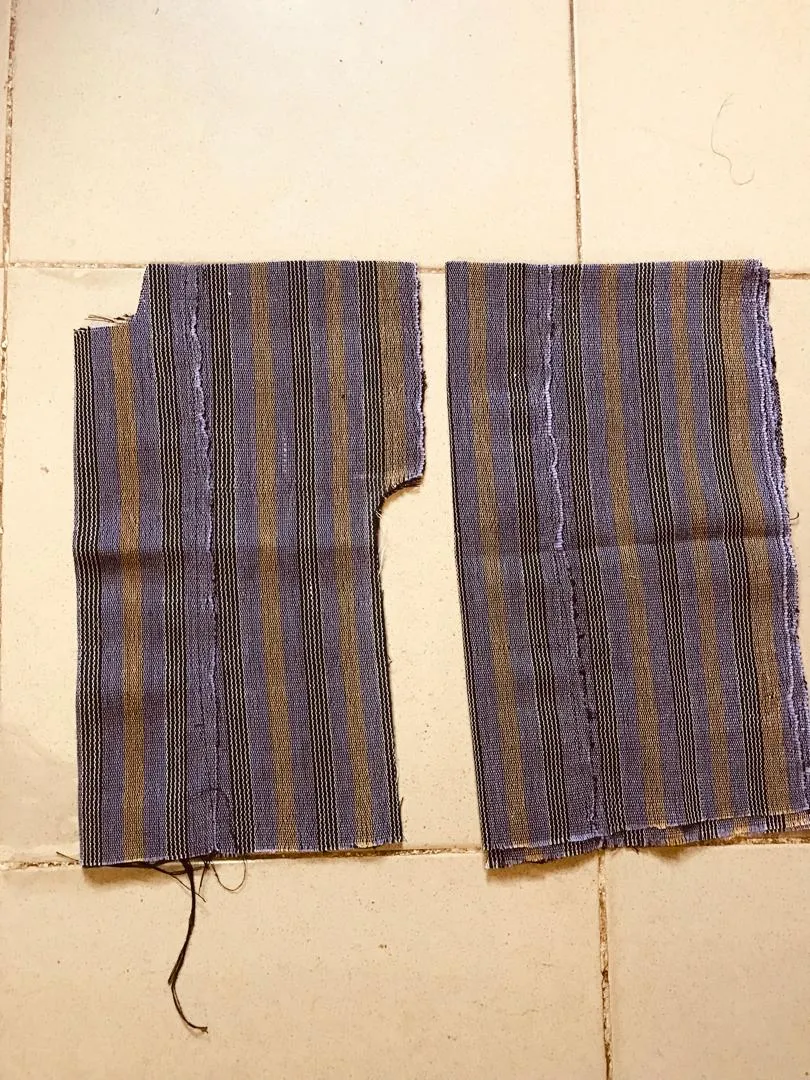
I folded the fabrics into 4.
Measured out a neckline of 2.5" by 2.5" since this is for a year-old baby.
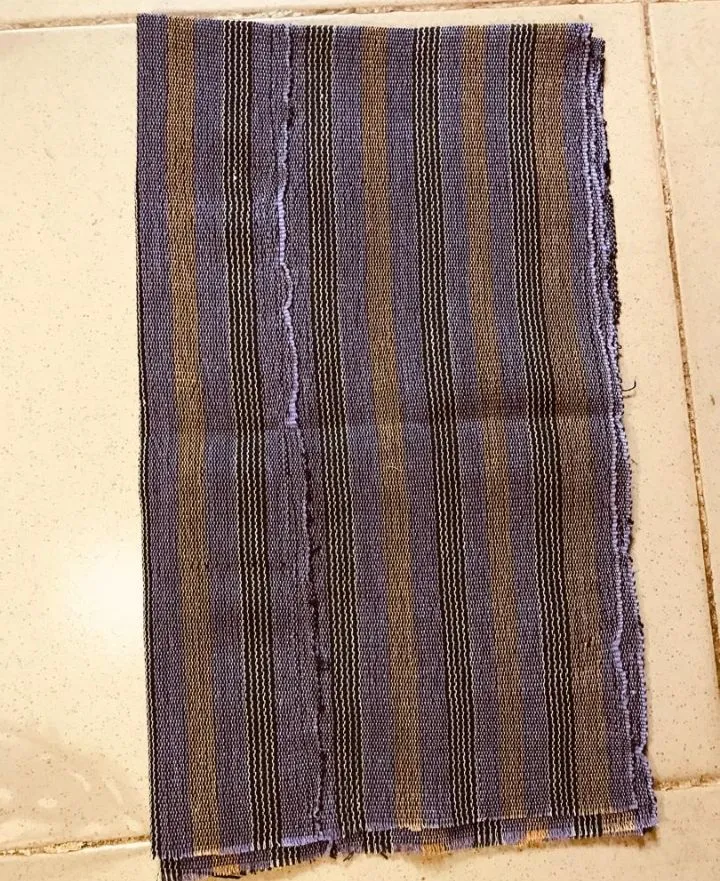
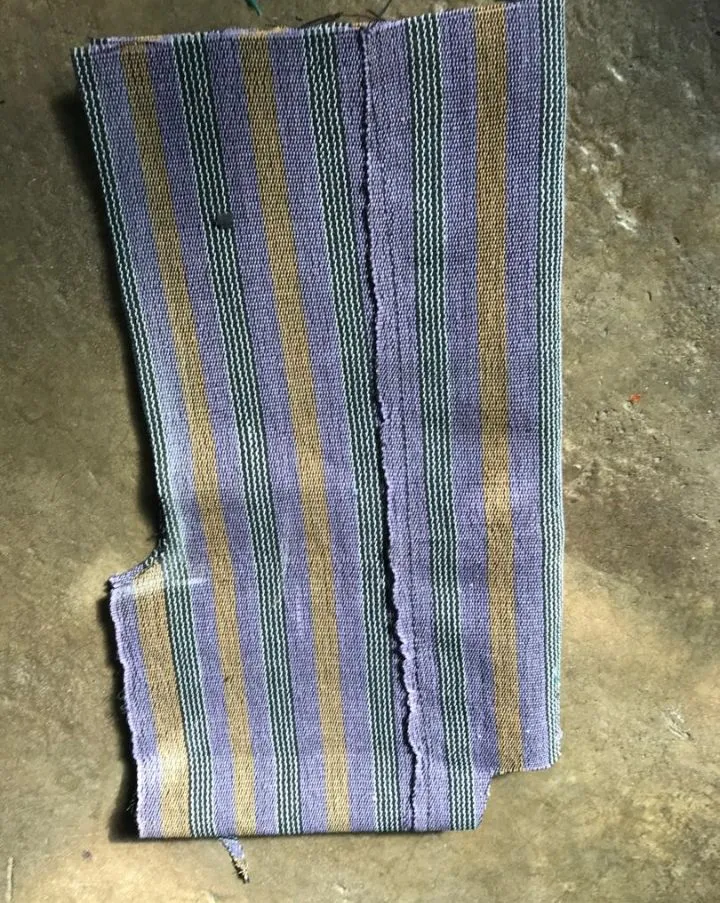
Then I measured out a calculation of both the shoulder and sleeve length together to be 6". Her blouse length was measured, and then the chest line. These were alld, and then I cut out the iron here.
Since I folded it in 4 parts, both the front and back were cut at the same time with the same neckline measurements. This is how to cut our traditional "buba" blouse.
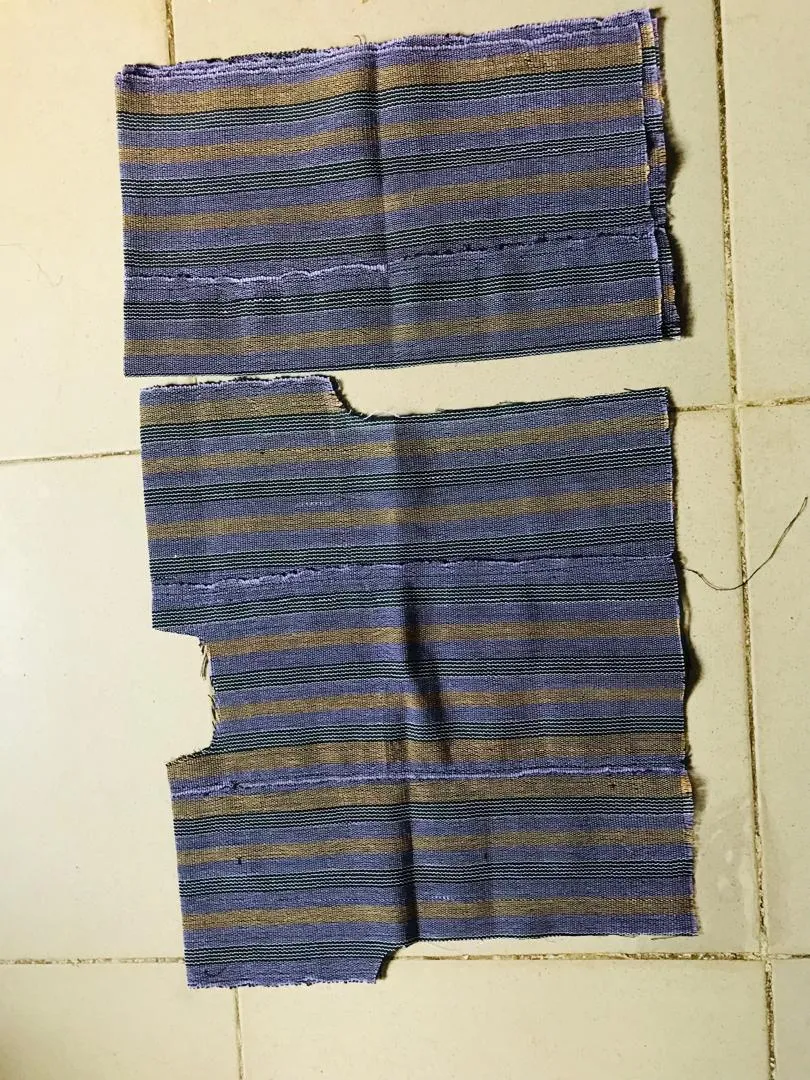
Next is the "iro", which I measured out twice her hip measurement and cut it out here.

For the sewing, I started with taping the edges of the blouse with black bias strip. The weaved material edges often fray each time we cut the outfit to sew this. In order not to keep the rough edges of the seam lines, I came up with the brilliant idea of taping the edges.
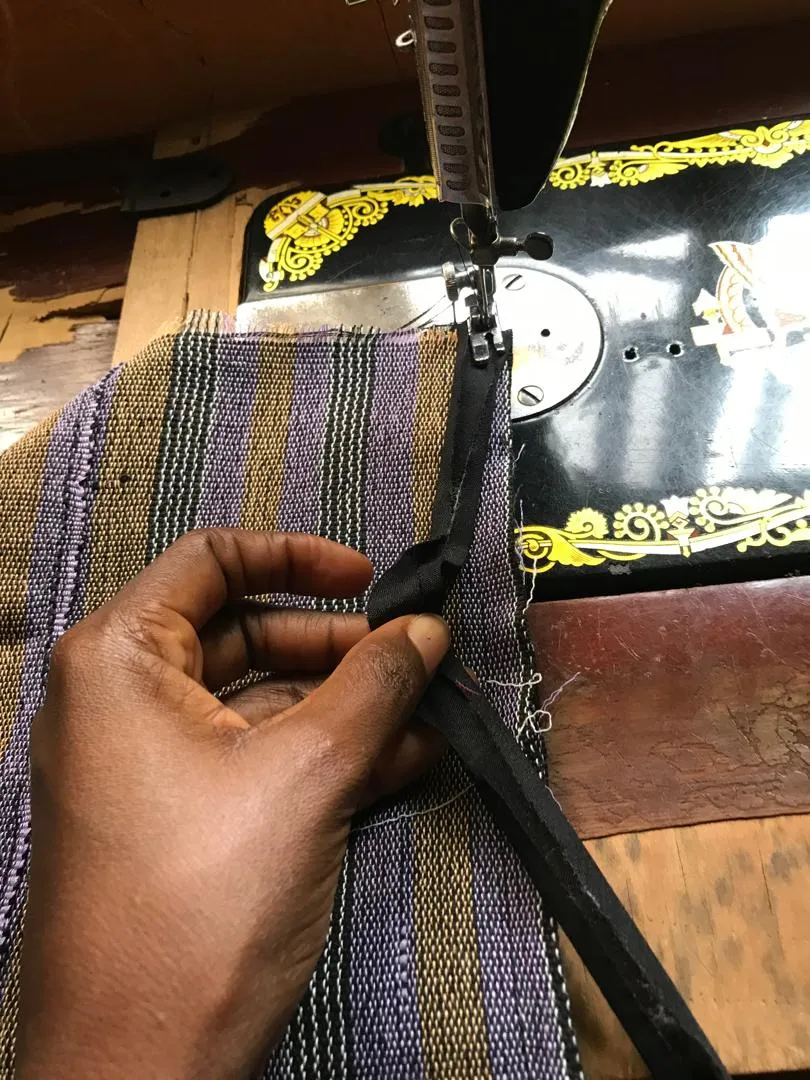
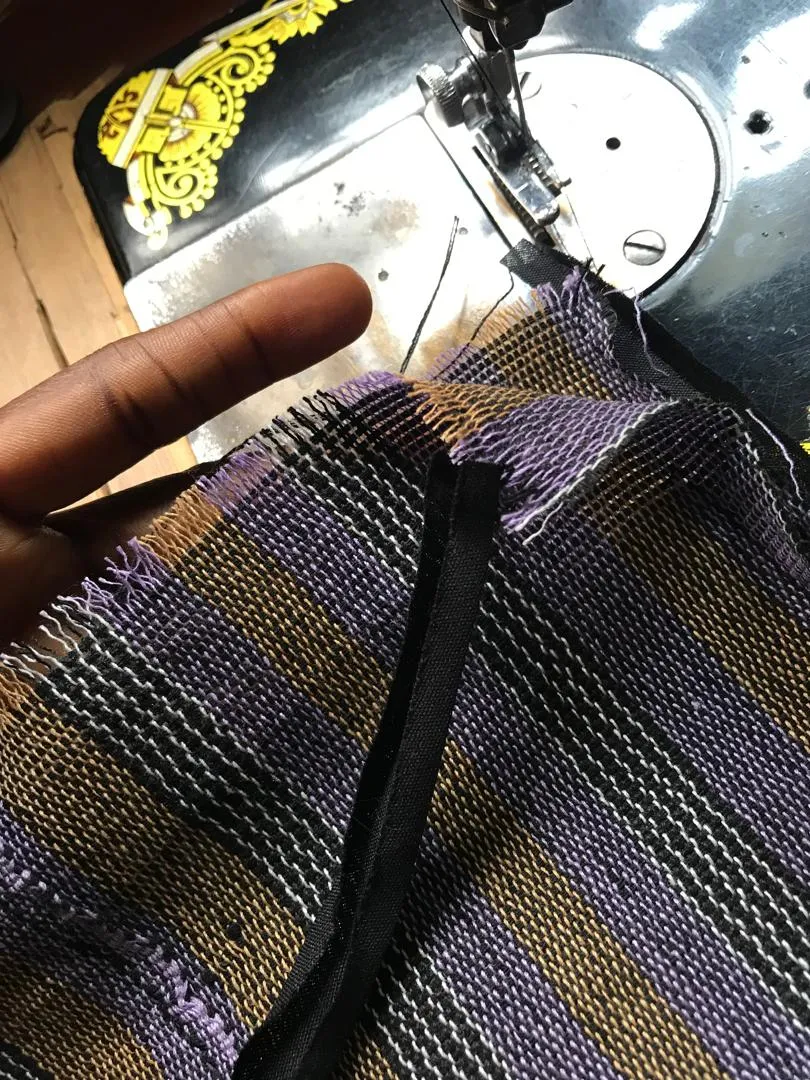
After that I joined the side seam allowance and turned the hem of the blouse.
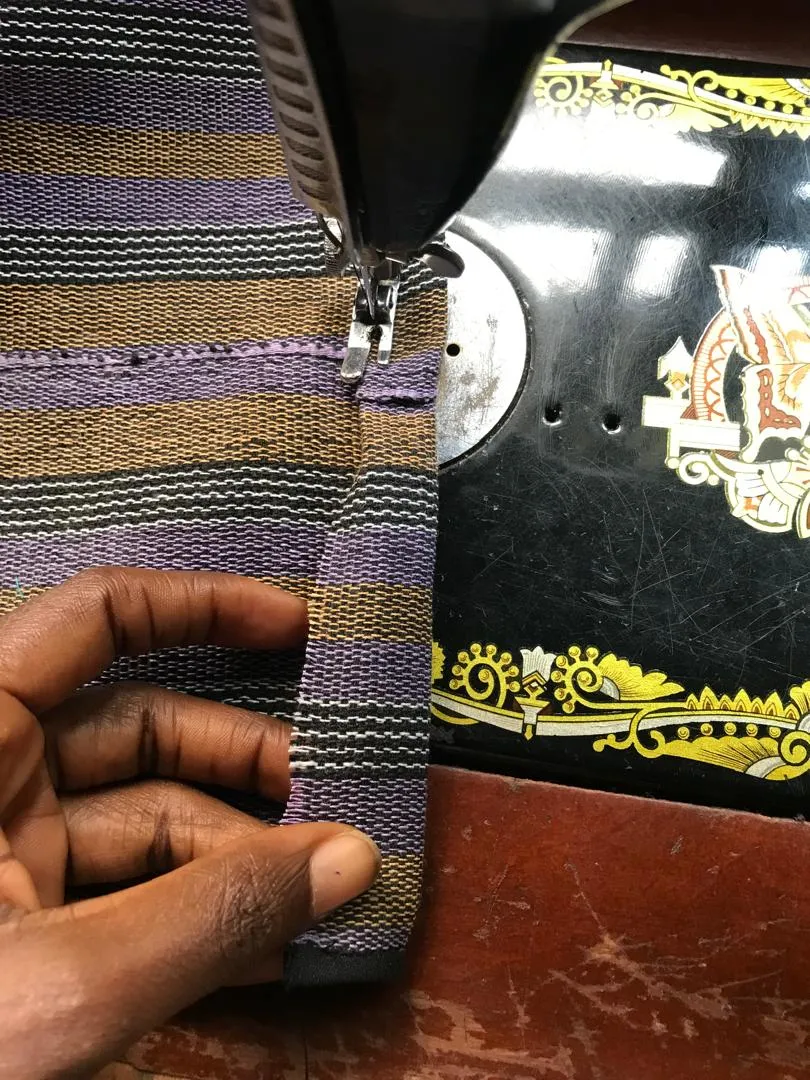
Now, to where tradition meets a modern touch, I decided on some embellishment of the blouse. This often adds so much shine and glitter to our traditional wear.
I got some rhinestones, and while following the ready-made flower design on the board, I traced the rhinestones and then got a transfer sheet to move the stones to my fabric.

This board is a ready-made design board often made for us to create lovely stone pattern designs on clothes.
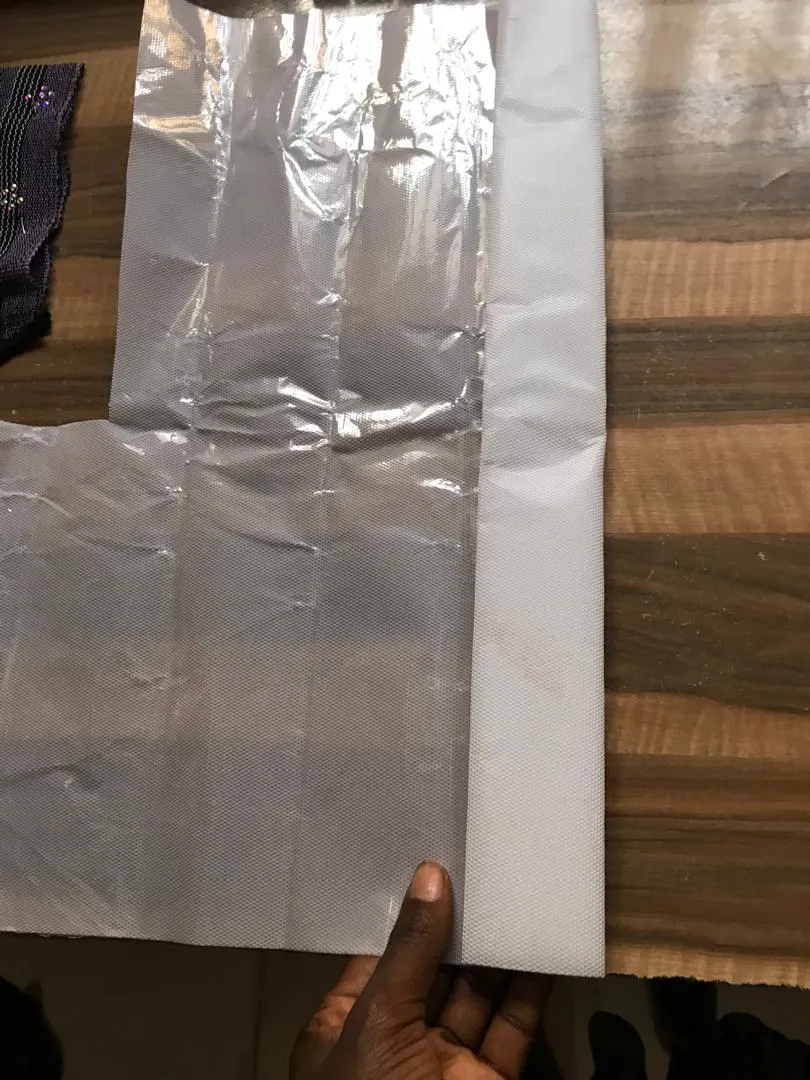
While this transfer sheet has gum on the surface used to pick the perfectly set stone design from the board to be transferred onto our clothes.
I repeated the process on the blouse until I had completed the stoning using steam to transfer the rhinestone to the fabric.
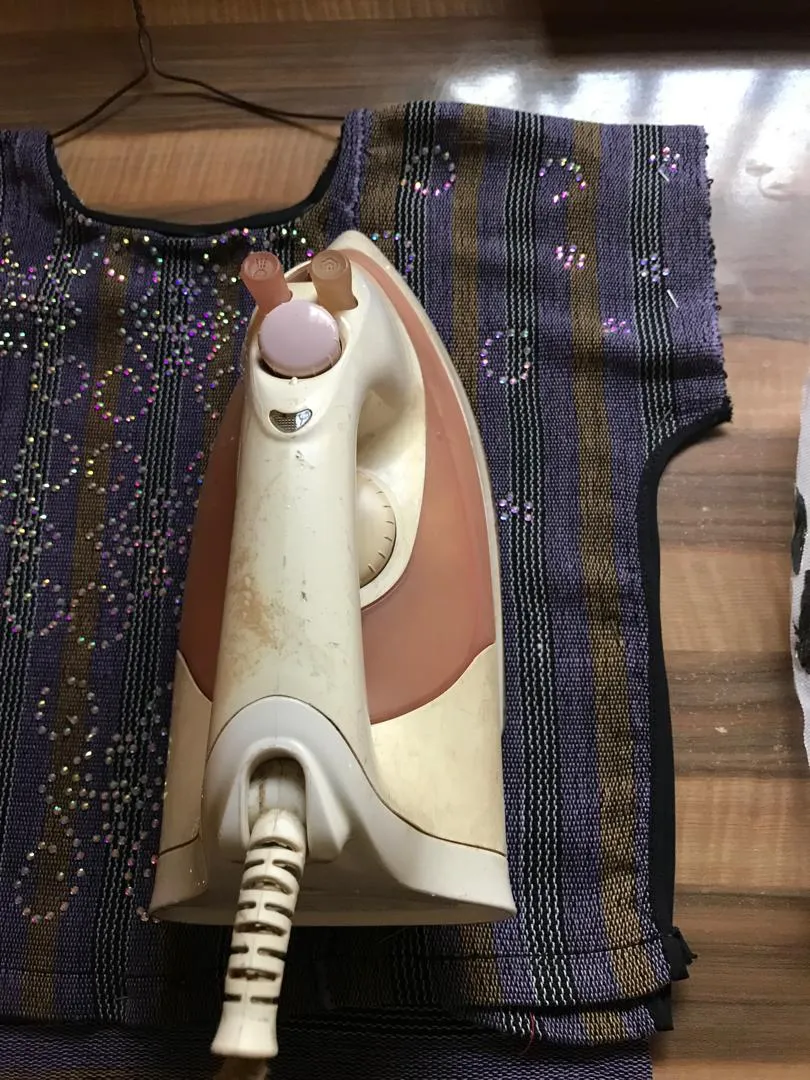
Now the last part is the "gele."
The outfit is often worn as a complete set with this headgear.

Hence we cut out about 30" width and 60" length of the Ofi fabric and tie it to form a headgear like this.
I hope that you have learnt a thing from the making process and can apply this when making your own cultural attire similar to this.